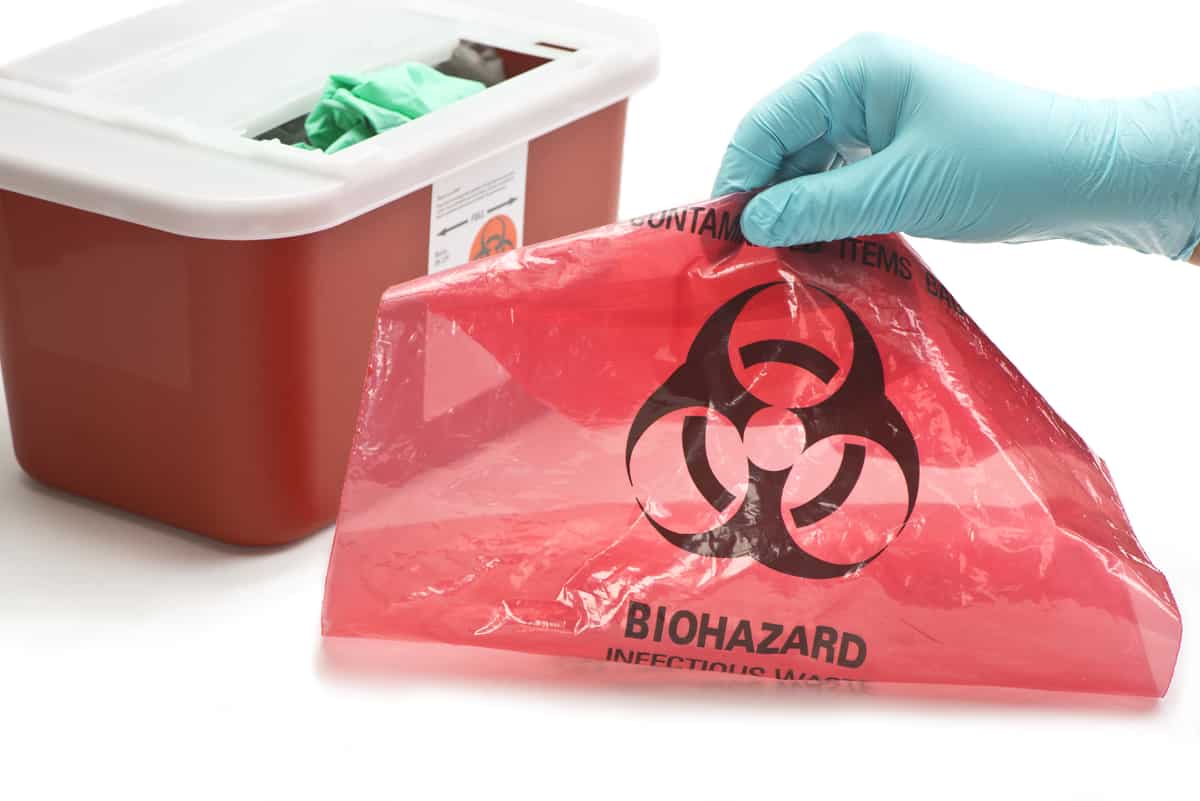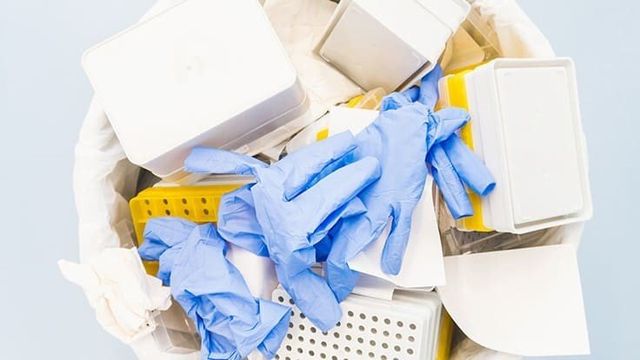Medical Waste Removal Mastery: Where Service Excellence Satisfies Health And Wellness Requirements
Wiki Article
Remain Ahead of Laws: Professional Suggestions on Medical Waste Disposal
In a globe where the health care industry is continuously advancing, it is important for medical centers to remain ahead of regulations when it comes to the appropriate disposal of clinical waste. From recognizing the various classifications of medical waste to carrying out the right collection and partition methods, this conversation will certainly supply actionable tips and beneficial understandings to assist centers remain ahead of policies in the ever-changing landscape of medical waste disposal.Understanding Clinical Waste Categories
Understanding medical waste classifications is necessary for appropriate disposal and management in health care facilities. Clinical waste refers to any kind of waste produced by healthcare activities that might position a risk to public wellness or the setting. It is vital to categorize clinical waste properly to guarantee its secure handling, treatment, transportation, and disposal.There are several classifications of medical waste that health care centers need to be acquainted with. One of the most common classifications consist of infectious waste, pathological waste, sharps waste, pharmaceutical waste, and chemical waste. Each category has certain guidelines and policies for its appropriate management and disposal.
Pathological waste refers to human cells, body organs, or body parts that need special handling and disposal. Pharmaceutical waste comprises expired, extra, or polluted medications that need cautious handling and disposal.
Staying Up-To-Date With Regulatory Changes
Staying present with regulative modifications is critical for medical care centers to make sure conformity and proper monitoring of clinical garbage disposal. medical waste removal. With regulations constantly developing, it is important for healthcare centers to remain updated to avoid penalties, penalties, and potential harm to the setting and public health and wellnessTo stay ahead of governing adjustments, medical care facilities should develop a system for tracking and tracking updates. This can be done by signing up for governing newsletters, attending seminars and workshops, and proactively joining market organizations. In addition, facilities must assign a team member or team liable for staying educated and sharing details to appropriate stakeholders.
Normal communication with governing companies is likewise essential. Medical care facilities need to establish partnerships with local, state, and government agencies to guarantee they recognize any type of changes in guidelines that may affect their waste monitoring methods. This can be done via regular meetings, engagement in public comment periods, and positive involvement with regulatory agencies.
Additionally, healthcare centers must think about partnering with waste management firms that specialize in clinical waste disposal (medical waste disposal services with WasteX). These business are typically fluent in the current policies and can supply advice and support to ensure conformity
Applying Proper Collection and Segregation Techniques
To successfully manage clinical garbage disposal, healthcare facilities must establish appropriate collection and partition approaches based on regulative guidelines. Implementing these approaches ensures the safe handling and disposal of potentially dangerous materials, safeguards the environment, and reduces the danger of injuries and infections to health care employees and the basic public.
Proper collection and segregation techniques include using assigned containers and identifying systems. Healthcare facilities ought to offer clearly labeled containers look at this website for various kinds of clinical waste, such as sharps, contagious waste, pharmaceutical waste, and non-hazardous waste. These containers ought to be color-coded and clearly significant to stay clear of confusion and advertise very easy identification.
Additionally, healthcare centers must train their staff on the proper treatments for gathering and segregating clinical waste. This consists of enlightening them on the different types of waste, the appropriate containers to make use of, and the value of following guidelines and guidelines. Normal training sessions and refresher course courses need to be carried out to make sure that personnel continue to be updated on ideal methods.
Additionally, healthcare centers ought to establish a system for regular collection and disposal of clinical waste. This may entail partnering with accredited waste management firms that concentrate on medical garbage disposal. These companies will certainly ensure that the accumulated waste is moved and taken care of in compliance with governing requirements.
Selecting the Right Disposal Methods

Incineration is just one of one of the most efficient and usual approaches for dealing with particular types of clinical waste, such as pathological waste and sharps. It includes the regulated combustion of waste at heats, minimizing it to ash. Incineration can release hazardous pollutants into the air and contribute to air pollution.

Various other disposal techniques include chemical therapy, microwave treatment, and landfilling. Chemical therapy includes making use of chemicals to counteract the waste and disinfect. Microwave therapy utilizes microwave power to warm and disinfect the waste. Landfilling involves hiding the waste in a designated garbage dump area (medical waste disposal services with WasteX). However, landfilling needs to be the last option because of the possible threat of contamination to soil and groundwater.
Ensuring Compliance Via Documentation and Training
After very carefully thinking about the proper disposal approaches for clinical waste, medical care centers must ensure conformity with regulations and minimize environmental impact by implementing effective documentation and training procedures. This step is important in preserving a risk-free and sustainable setting for both medical care employees and the basic public.
Healthcare employees who handle medical waste should receive proper training on waste partition, dealing with, and disposal procedures. By giving detailed training, medical care centers can equip their team to make informed decisions and minimize the risk of inappropriate waste disposal.
Final Thought
To conclude, staying why not look here ahead of regulations in medical waste disposal is crucial for medical care centers. medical waste removal. Understanding the various groups of medical waste, staying updated with governing adjustments, implementing appropriate collection and segregation techniques, selecting the ideal disposal methods, and ensuring conformity through documentation and training are all crucial steps. By following these guidelines, health care organizations can effectively handle and dispose of clinical waste click for info in a safe and responsible mannerFrom understanding the various groups of clinical waste to executing the right collection and partition methods, this discussion will supply valuable understandings and actionable suggestions to assist centers stay ahead of laws in the ever-changing landscape of clinical waste disposal. - medical waste disposal services with WasteX
The most common categories consist of transmittable waste, pathological waste, sharps waste, pharmaceutical waste, and chemical waste. Health care facilities ought to offer clearly labeled containers for various types of clinical waste, such as sharps, transmittable waste, pharmaceutical waste, and non-hazardous waste. Healthcare facilities need to establish a comprehensive system to tape and track all aspects of medical waste disposal, consisting of types of waste produced, amounts, and disposal techniques utilized. Health care workers that manage clinical waste must obtain suitable training on waste partition, dealing with, and disposal procedures.
Report this wiki page